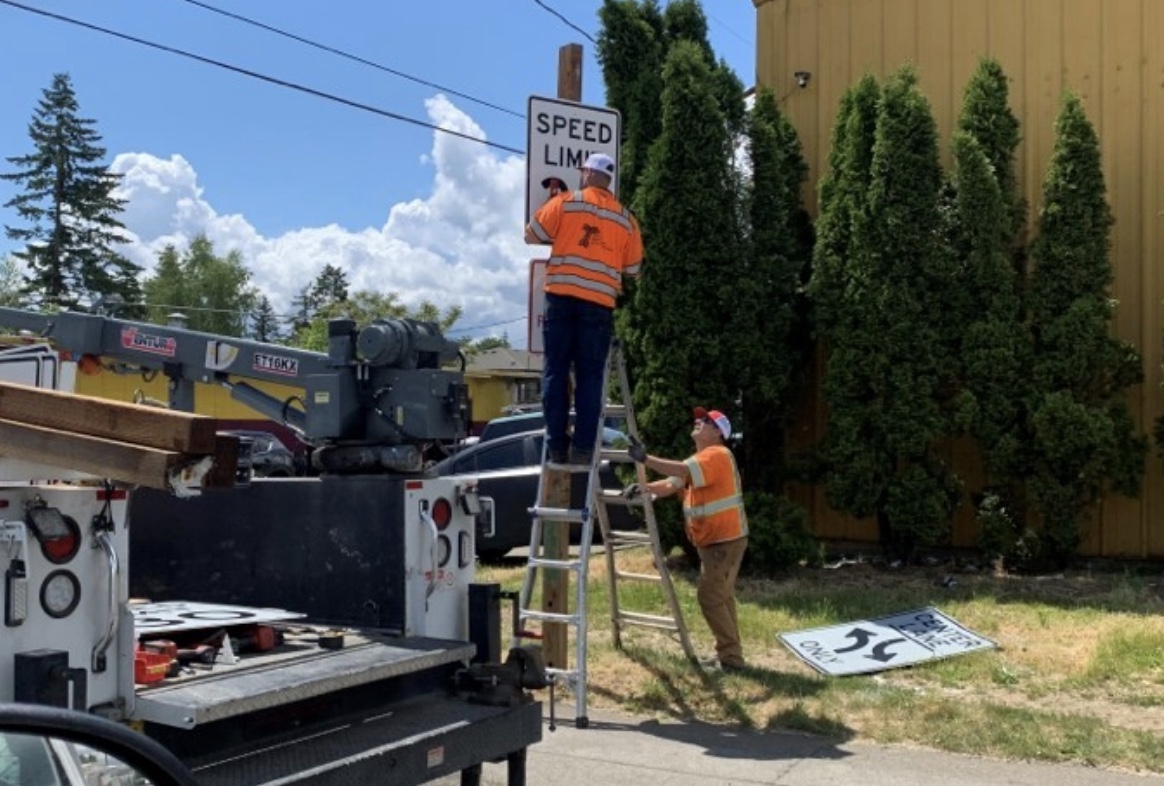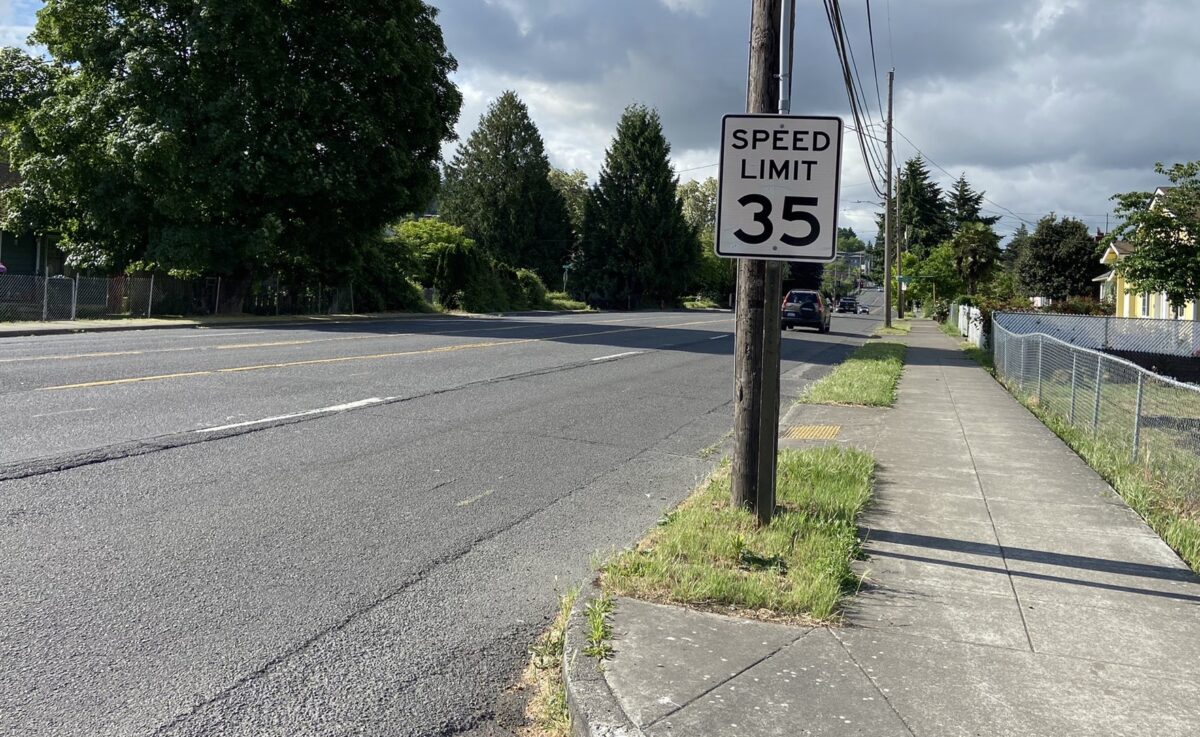
(Photo: ODOT)
As promised earlier this month, the Oregon Department of Transportation has installed 39 new speed limit signs on a seven-mile stretch of 82nd Avenue between Killingsworth and Clatsop Streets.
The new signs mean this section of 82nd (Highway 213) now has a 30 mph speed limit. That’s an overdue change. And it won’t make much of an impact on driving behavior in isolation — unless you ask ODOT’s PR department. They say the signs will slow drivers down. Immediately.
According ODOT Region 1 Director Rian Windsheimer in an ODOT press release today, the signs will, “Have an immediate impact, giving drivers more time to see and react, hopefully avoiding collisions all together [sic].” Windsheimer also said, “In addition, when crashes involving pedestrians do occur, lowering the speed from 35 to 30 increases the survival rate of pedestrians by up to 50%. That’s a big deal!”
It’s easy to understand Windsheimer’s excitement. He’s under pressure from an influential list of lawmakers to make substantial investments in 82nd. Unfortunately, what he’s saying isn’t true. At least not according to ODOT’s own engineers.
Advertisement
A document posted on ODOT’s website contains answers to several frequently asked questions about speed zones.
“Won’t lowering the posted speed reduce speeds?” the first question asks. “No” answers ODOT engineers. Here’s why:
“Studies show that there is little change in the driving speeds after a lower speed sign is posted. Drivers are much more influenced by the roadway conditions and their perceptions of the need to slow down. In fact, the lowering of a speed limit, below what is perceived by drivers as a reasonable speed, may result in greater differences in speeds (more variance) with some going faster and some going slower. This means there are more conflicts between vehicles than before the signed speed was lowered. One study reduced posted speeds by 5, 10 and 15 mph at numerous sites. When speeds were reduced, less than one-half of a percent of the drivers complied with the posted speeds. The average change in speed for all drivers was less than 2 mph and crashes increased by 5 percent.”
Beyond Windsheimer’s sloppy claims about the signs that are disputed by his own engineers, his agency wants to take credit for lowering the speed limit. The fact is, City of Portland filed a formal request with ODOT nearly one year ago to lower speeds on 82nd. The request had gathered dust and Windsheimer only pushed it forward now because he felt public pressure from community leaders and statewide elected officials following the death of two more people on the road last month.
It’s good to see ODOT take some action. But let’s be realistic. New signs are just new signs. Without other measures like robust traffic calming infrastructure, policies to discourage driving, and law enforcement, the signs are likely to have a very limited impact on how people drive. These signs and the $3 million investment in 82nd passed by the Oregon Transportation Commission last week will make just a tiny dent in the estimated $185 million needed to bring this neighborhood highway out of the dark ages.
82nd needs more money, smarter infrastructure investments, and innovative management. It needs less wishful thinking by embattled agency leaders.
— Jonathan Maus: (503) 706-8804, @jonathan_maus on Twitter and jonathan@bikeportland.org
— Get our headlines delivered to your inbox.
— Support this independent community media outlet with a one-time contribution or monthly subscription.


